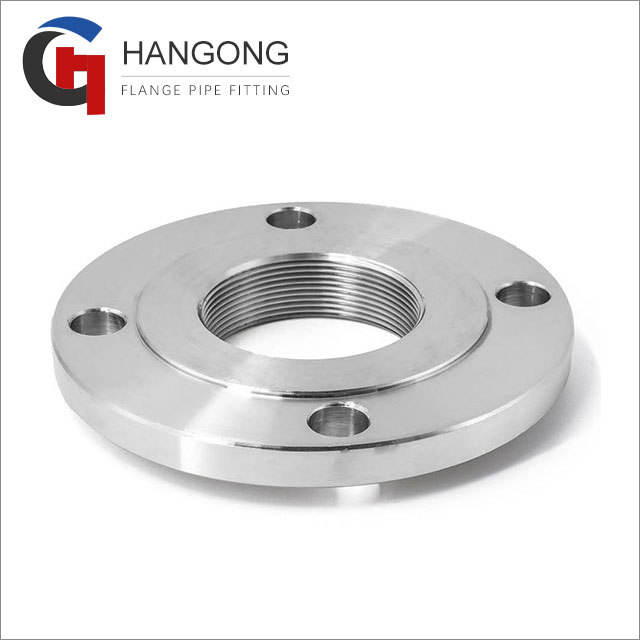Ensuring Longevity: Recommended Maintenance and Inspection Routines for Duplex Steel S31803 Threaded Flanges
2024-06-12
Duplex Steel S31803 Threaded Flanges are renowned for their superior corrosion resistance, high strength, and durability, making them ideal for demanding industrial applications. However, to maintain their long-term reliability and performance, regular maintenance and inspection routines are essential. In this blog, we will outline the recommended practices to ensure that these flanges continue to perform optimally throughout their service life.
Routine Maintenance Practices
1. Regular Cleaning
Why:
Regular cleaning helps prevent the buildup of contaminants and corrosive agents that can compromise the integrity of the flanges.
How:
- Use mild detergents and water to clean the surface of the flanges.
- Avoid using harsh chemicals or abrasive materials that could damage the flange surface.
- Rinse thoroughly with clean water to remove any cleaning agent residues.
2. Lubrication of Threads
Why:
Proper lubrication reduces friction during assembly and disassembly, preventing galling and wear of the threaded surfaces.
How:
- Apply a suitable anti-seize compound or lubricant to the threads before installation.
- Ensure the lubricant is compatible with Duplex Steel S31803 and the operational environment (e.g., temperature, chemical exposure).
3. Tightening Checks
Why:
Regularly checking and adjusting the tightness of threaded connections helps maintain a secure and leak-proof fit.
How:
- Use a calibrated torque wrench to ensure that the bolts are tightened to the manufacturer's specified torque values.
- Check for any signs of loosening or misalignment and adjust as necessary.
Inspection Routines
1. Visual Inspection
Why:
Visual inspections can quickly identify surface defects, corrosion, or damage that might affect the performance of the flanges.
How:
- Inspect the flanges regularly for signs of rust, pitting, or surface discoloration.
- Look for any visible cracks, dents, or deformation.
- Check the integrity of the threaded connections and ensure there are no signs of wear or cross-threading.
2. Non-Destructive Testing (NDT)
Why:
NDT methods allow for the detection of internal defects and stress-related damage without causing harm to the flanges.
How:
- Ultrasonic Testing: Use ultrasonic waves to detect internal flaws or inclusions that could weaken the flange.
- Magnetic Particle Testing: Useful for identifying surface and slightly subsurface defects.
- Dye Penetrant Testing: Apply a dye to the surface to reveal cracks and other surface discontinuities.
- Radiographic Testing: Use X-rays or gamma rays to inspect the internal structure for hidden defects.
3. Corrosion Monitoring
Why:
Monitoring corrosion rates and patterns helps predict the remaining service life of the flanges and plan for timely replacements or repairs.
How:
- Use corrosion coupons or probes to measure the rate of corrosion in the operational environment.
- Regularly sample and analyze the operational fluids for corrosive agents.
- Conduct electrochemical testing methods like linear polarization resistance (LPR) to assess the corrosion rate.
Special Considerations for Duplex Steel S31803
1. Temperature Management
Why:
Duplex Steel S31803 is highly resistant to corrosion, but extreme temperatures can affect its mechanical properties and corrosion resistance.
How:
- Monitor the operating temperatures to ensure they stay within the recommended range for Duplex Steel S31803.
- Use thermal insulation or heat exchangers to maintain stable temperature conditions.
2. Chemical Exposure Control
Why:
Exposure to certain chemicals can accelerate corrosion or cause chemical degradation of the material.
How:
- Identify and mitigate exposure to aggressive chemicals, especially chlorides and acids.
- Use appropriate coatings or linings to protect the flanges in highly aggressive environments.
Documentation and Record Keeping
Why:
Maintaining detailed records of all maintenance and inspection activities ensures traceability and helps identify recurring issues or patterns.
How:
- Keep logs of all visual inspections, NDT results, and corrosion monitoring data.
- Document any maintenance activities, including cleaning, lubrication, and tightening checks.
- Record any incidents of damage or failure and the corrective actions taken.
Conclusion
Regular maintenance and thorough inspection routines are crucial for ensuring the long-term reliability and performance of Duplex Steel S31803 Threaded Flanges in industrial applications. By adhering to these recommended practices, you can extend the service life of your flanges, reduce the risk of unexpected failures, and maintain the overall efficiency and safety of your piping systems.
Investing time and resources into proper maintenance and inspection not only preserves the integrity of the flanges but also contributes to the smooth and uninterrupted operation of industrial processes. With these routines in place, Duplex Steel S31803 Threaded Flanges will continue to deliver their exceptional benefits in the most demanding environments.



